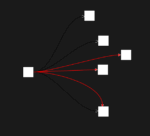As a software consulting LLC specializing in data, analytics, and innovation, we’ve witnessed firsthand the evolution of how businesses manage their ever-growing information repositories. Until recently, companies were forced to choose between sprawling data lakes—flexible but often difficult to govern—and traditional data warehouses, which offer structured reliability yet struggle with modern analytics needs. The quest to seamlessly blend these two approaches has led to the rise of the “data lakehouse,” an emerging architecture that addresses the limitations of both existing paradigms. It brings real-time analytics capabilities, structured governance, and open data access all under one roof, aligning with the changing needs of organizations that want to remain competitive in today’s highly data-driven marketplace.
In our experience, the complexities of data ingestion and transformation can be daunting. Many clients question whether they should rely on ETL or ELT. Our own research, informed by resources like the role of ETL in data analytics and business intelligence and why ELT makes more sense than ETL in 2025, suggests that no single solution fits every use case. Nonetheless, a data lakehouse provides a more unified platform for transforming data at any stage, whether cleaning up messy datasets or requiring sub-second responses to analytics queries. If your organization grapples with how to efficiently store, process, and analyze large volumes of diverse datasets while maintaining data security, the lakehouse model may be the strategic solution you’ve been waiting for.
With robust privacy regulations now a global standard, data handling must also comply with growing regulatory frameworks, especially in industries like banking and financial services. To this end, it becomes crucial to explore approaches such as how to use ETL to clean and transform messy data sets and remain vigilant about the importance of data privacy in fintech protecting user information in a digital world. The data lakehouse offers the controls and consistency required to comply with regulations while still delivering agility. By merging the raw storage benefits of a lake with the performance and governance features of a warehouse, organizations can access new frontiers in analytics innovation while safeguarding critical assets.
Why Lakehouses Are Transforming Data Architecture
Enterprises today are under immense pressure to harness data for advanced analytics, machine learning initiatives, and real-time insights. Traditional data warehouses, while reliable for reporting and business intelligence, often fall short when it comes to handling the variety and velocity of unstructured data. On the flip side, data lakes excel at taking in both structured and unstructured data, yet they can devolve into “data swamps” without careful governance. This is where the data lakehouse shines. By enabling consistent metadata layers and support for transactional queries, a lakehouse ensures both immediate accessibility and long-term reliability. Whether you’re managing financial transactions, IoT sensor data, or social media streams, a lakehouse’s unified design can dramatically reduce operational complexities associated with running multiple parallel systems.
An additional advantage is how lakehouses simplify data accessibility for tools and services. Organizations no longer must choose between storing data in a lake for advanced analytics or duplicating datasets into a warehouse for stable data modeling. Instead, they can maintain a single source of truth, leveraging a cohesive environment that streamlines data discovery and manipulation. This architectural unification is particularly powerful for businesses exploring specialized technologies like mastering range filtering with the SQL BETWEEN operator or delving into advanced financial analytics. The lakehouse can plug directly into these processes, cutting down on data movement and boosting performance.
Even forward-looking innovations—think of blockchain’s potential impact on the data industry a look into the future—stand to benefit from this architectural model. The structure and governance of a lakehouse allow diverse data sources, including blockchain transactions, to coexist with traditional enterprise data. This synergy not only streamlines auditing and compliance but also supports high-level analytics workloads. Ultimately, the data lakehouse’s transformative potential comes from balancing flexibility with control, ensuring that leadership teams can make data-driven decisions with speed, confidence, and accuracy.
Key Implementation Steps for a Successful Lakehouse
Achieving a truly effective data lakehouse demands meticulous planning and execution. First, clarify your data strategy. Decide which data types—streaming IoT feeds, transactional logs, or social media text—will flow into the lakehouse. Next, define data governance policies that outline access control, retention schedules, and compliance requirements. Without these guardrails, you risk replicating the chaos that often afflicts ungoverned data lakes. This is an opportune time to integrate lessons from how to use ETL to clean and transform messy data sets, ensuring your data pipeline incorporates both thorough cleansing and robust documentation.
Considering the volume and complexity of the data you’ll manage, it’s wise to adopt scalable data processing frameworks and to build in support for advanced analytics from the outset. Hybrid or cloud-native systems are often favored for their elasticity and cost-effectiveness. Here, consulting experts who have firsthand experience with data-centric solutions—such as our own Node.js consulting services—can streamline the process of selecting the right tools for ingestion, transformation, and orchestration.
Once you’ve addressed ingestion and governance, the next step is to design intuitive, user-friendly query and visualization integrations. According to our experience, bridging real-time analytics with more traditional BI requires planning around the types of queries your analysts will run. Will you rely on streaming data for instantaneous insights, or will you lean on historical analytics? Identifying these use cases upfront helps in deciding which data models to adopt and whether you should employ Import vs Direct Query Power BI comprehensive guide approaches. By being deliberate in your planning—designing for governance, performance, and scalability—you will set the foundation for a robust lakehouse that evolves in tandem with your growing data demands.
The Road Ahead: Evolving Your Data Strategy
Implementing a data lakehouse is not just a one-off project; it’s an ongoing journey that involves constant optimization, monitoring, and adaptation. As your business grows and external conditions shift—from changes in consumer behavior to new data privacy regulations—your lakehouse must remain flexible. Prepare your teams to refine ETL and ELT processes, incorporate new data sources, and adjust access policies. Being vigilant about compliance is also crucial; data privacy laws are rapidly evolving, making it more important than ever to stay agile and well-informed. Keeping an eye on emerging concepts—like why ELT makes more sense than ETL in 2025—will help you remain ahead of competitors in efficiency and security.
Continual investment in education and training is equally vital. Technical staff, analysts, and even business stakeholders can benefit from ongoing skill development, ensuring that they are equipped to exploit the full potential of your ever-evolving data ecosystem. This includes deeper dives into specialized areas such as mastering range filtering with the SQL BETWEEN operator

























